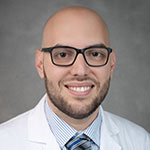Good news, smokers and former smokers. Early screening plus advanced diagnostic tools make it more possible than ever before to cure lung cancer.
The only problem is not enough people know about it. Getting the word out can help us turn around a previously dismal outlook for lung cancer.
An estimated 70 to 75 percent of lung cancers are not detected until they are stage 3 or 4, according to the American Cancer Society. Treatment at this point is usually palliative, meaning the patient won’t survive.
Now, with early detection and advanced diagnostics, we can catch lung cancers at stage 1 or 2. That’s early enough to cure the cancer with surgery and/or radiation treatment.
If more people take advantage of early detection, we can shift the curve from palliative care to a cure that allows patients to live out their lives. Put simply, fewer people will die from lung cancer.
Low-Dose CT Scan
New hope lies in a quick-and-painless lung cancer screening called a low-dose CT scan. It can detect lung cancer even before you have symptoms. It’s also simple. Just lie on an exam table while it provides the clearest images of lung nodules which signal early cancer.
The criteria to qualify for a low-dose CT scan includes:
- Current or former smoker
- Smoke 20 pack/years (number of packs times the number of years smoked)
- Age 50 to 80 (Age 50 to 77 for Medicare)
- Willingness to have diagnostic procedure/treatment if scan is positive
Being approved for a low-dose CT scan requires a somewhat detailed conversation with a primary care provider that must be documented for the scan to be approved.
Minimally Invasive Robotic Navigational Bronchoscopy
Even more hope lies in new technology that makes it possible to definitely diagnose lung cancer more quickly, accurately and less invasively.
CHI St. Alexius Health is the first in the state to acquire the Ion platform, a minimally-invasive robotic-assisted navigational bronchoscopy tool. It uses an ultra-thin and maneuverable catheter to navigate through small airways to reach all 18 segments of the lung, and uses a flexible needle to remove the suspect tissue.
With this technology, we can provide a definitive diagnosis in one procedure, instead of two or more. In fact, we can look at the suspected tissue sample while still in the operating room and, if the pathology determines it is malignant, a surgeon comes in and removes the cancer on the spot.
That’s diagnosis and cure in the procedure, with only one time under anesthesia – something our program at CHI St. Alexius Health was the first first in the state to accomplish.
Curing More Lung Cancers
We’re serious about fighting lung cancer with early detection, advanced diagnostic tools and a patient-friendly program which ensures there’s no delay in treatment.
So far, we’ve been able to cure two-thirds of the patients we’ve seen. The other one-third included patients with benign cancers or cancers that were too advanced for curative treatment.
We’d like to cure more lung cancers. If you have any questions about early detection for you or a loved one, talk to your primary care provider or contact the CHI St. Alexius Health Heart & Lung Clinic at 701.530.7502.





